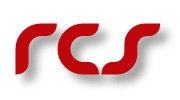To capitalize sales opportunities, every retailer must have inventory software. Having an inventory is important, but more important is keeping a track of it. A business can work efficiently and make a profit if it has a world class inventory management system that can track, manage and organise sales and other retail processes.
Virtuous Reviews understands that paper and pen tracking and even excel sheet management is time consuming and prone to error. So, it has come up with the excellent alternative to these old school tracking methods. All the software that are mentioned here helps to control and manage business, at reduced costs and errors. They provide you correct analysis about the turnover rate and save you from understocking and overstocking. The return on investment for these inventory management systems is huge. When you have a correct idea about supply requirement, you can save space, time, and damage and can have happy customers.
To keep up with the competition, retailers cannot afford casual attitude towards their supplies. It should be the top priority because nothing frustrates a customer more when you have the huge inventory and great variety, but just what he wants is ‘out of stock’.
How to choose the best inventory management software?
Here are six core things to look for in your next inventory management software-
Designed for Your Industry
Each industry has slightly different needs, and software providers have developed industry-specific inventory management programs. Begin your search by limiting it to solutions designed with your industry, manufacturing, in mind.
Compatible with Your Hardware
Before purchasing any software, be sure it is compatible with your existing hardware. With most computer programs, hardware compatibility is rarely an issue. Some inventory management programs take up a lot of virtual resources, though, and they require powerful computers to run on. Avoid costly hardware upgrades by choosing a program that your current system can run.
Importing and Exporting Data
Your inventory management system should easily import data from and export it to other programs your company uses. Check whether it is compatible with your ordering system and accounting software, and also make sure you can import data from your current inventory management system.
An Intuitive Interface
Few small businesses have much money or time for training employees on new software, so it is important to select a system that is intuitive. You may have to pay slightly more for a well-designed system that is easy to use, but you will more than make up the difference by saving on training.
Perpetual Updating
Inventory management systems can be divided according to how frequently they update. Perpetual updating means that the program is constantly being updated; its counts are live and reflect what is in stock at any given moment. Periodic updating, in contrast, is done occasionally. With periodic updating, counts may be done daily, weekly, monthly, quarterly or at some other interval. These counts do not accurately reflect what is in stock at a given moment, but rather they show what was in stock when the count was done.
For small manufacturers, perpetual updating is preferable.
Features:-
- Monitor Inventory Levels - If you’re lying awake at 3am worrying your course or publication inventory is too low to fulfill an order, you shouldn’t need to lose any more sleep before you can find out. Inventory Management Systems allow for access to publication inventory levels anytime, any day.
- View Product History - Wondering how many course books you ordered last year? No need to call your vendor. You should be able to check it yourself easily and free of phone transferring hassles.
- See Replenishing Points - Using your Inventory Management System, you should be able to double check your replenishment points for all products.
- Back Order Status - You should be able to see if any of the products you ordered are on backorder.
- Ordering and Shipping from Inventory System - Did you forget to order enough of your instruction manuals? Or are you wondering when your order was shipped? No worries. Inventory Management Systems should allow you to adjust your order and view shipping information.
Benefits:-
- Complete supply chain visibility - when fully optimized, inventory software provides the entire operation with insight and actionable information regarding both inbound and outbound product flows - as well as the added ability to drill down into details if needed.
- Quality management - Inventory software identifies and tracks the various issues that could occur, and through reports and analytics, provides guidance regarding the factors impacting quality.
- Forecasting and planning - inventory management software not only manages "optimal" stock levels at the warehouse but can also predict your future capacity requirements.
- Cost management - any product sitting on the shelf is a liability that picks away at your business' profitability. By managing your stock requirements in real-time and increasing inventory turns, your business can make the most out of existing shelf space to improve margins.
- Efficiency and customer service - optimizing your inventory processes can reduce the amount of time to replenish stock, process shipments, and serve your customers (i.e. "pick, pack, and ship"). All of these efficiency improvements are recognized without sacrificing quality or increasing headcount.




 Visit Website
Visit Website
















